#ringil
Text
The night his father rides out over Anfauglith, Fingon does not sleep. He stands upon the parapet of Barad Eithel’s highest watchtower. It is a clear night of icy starlight — but to the North all is dark.
The Eagle appears suddenly, like a blue brushstroke against the blushing dawn. All through the slow sunrise Fingon’s heart hangs upon the brink of hope and despair. Could Manwë’s pity bless them twice?
He teeters towards despair on the Eagle’s return journey, for it is somber and without urgency. Still, Fingon waits. He waits until the ends of his nails are scraped away from clinging to the stone walls.
The Eagle wheels down into the jagged bowl of the Echoriath.
Fingon forestalls the onslaught of grief with denials, clinging, clinging. Say not that he is gone. Say not that the Noldor have lost their King. The Eagle rises again!
“Thorondor!” Fingon cries, knowing he can be no other.
Once the Lord of Eagles bore Fingon hither. Against reason Fingon hopes to see his father where once Thorondor accepted the burden of another Fingon loves.
But Thorondor’s back is bare. Fingon chokes, nearly collapses onto the stone — but his eyes catch on a flash of light beneath the Eagle’s great body. He hauls himself to standing.
Thorondor lands upon the tower’s roof, huge and majestic. In his talons he holds Fingolfin’s sword. Ringil, glittering through ropes of thick black blood.
The Eagle offers no words of explanation or consolation. He lets the sword fall gently at Fingon’s feet, and that is enough. Fingon knows: Fingolfin has fallen, but not in vain.
Reverential, grieving, Fingon bends to pick it up. As he stands, his cheeks are streaked with the salt trails of his tears, blown back by the beat of the Eagle’s wings.
#fingon#fingolfin#thorondor#ringil#triple drabble#my fic#no but Fingon deserves a bit of Fingolfin too
164 notes
·
View notes
Text
The Others: Ringil, Dagmor, Glamdring, Orcrist, Sting
Swords of the First Age, Part 3 of 3
[This is a continuation of the response to this ask]
Ringil
Meaning: From ringe- “cold”. Quenya. (Eldamo).
Maker: Unknown
Owned/wielded by: Fingolfin
Notable for: wounding Morgoth seven times and hewing his foot.
Fate: Unknown.
But Fingolfin gleamed beneath it as a star; for his mail was overlaid with silver, and his blue shield was set with crystals; and he drew his sword Ringil, that glittered like ice.
The Silmarillion, ‘Of the Ruin of Beleriand and the Fall of Fingolfin’
Discussion
We don’t know a lot about Ringil besides its epic, climactic moment. Who made it? Was it brought from Valinor or made in Beleriand? Did it somehow survive Fingolfin’s fall? Lots of room for the imagination to roam.
Dagmor
Meaning: Uncertain. Possibly “Slayer of Darkness”, combining dag- “slay” and môr “darkness”. Sindarin. (Eldamo).
Maker: Unknown
Owned/wielded by: Beren
Fate: Unknown
Danger he sought and death pursued,
and thus escaped the doom he wooed,
and deeds of breathless daring wrought
alone, of which the rumour brought
new hope to many a broken man.
They whispered 'Beren,' and began
in secret swords to whet, and soft
by shrouded hearths at evening oft
songs they would sing of Beren's bow,
of Dagmor his sword…
Lay of Leithian Recommenced, 503-12
This is the only mention of Beren’s sword’s name.
From the Trolls' Lair
There were lots of clothes, too, hanging on the walls—too small for trolls, I am afraid they belonged to victims—and among them were several swords of various makes, shapes, and sizes. Two caught their eyes particularly, because of their beautiful scabbards and jewelled hilts. Gandalf and Thorin each took one of these; and Bilbo took a knife in a leather sheath. It would have made only a tiny pocket-knife for a troll, but it was as good as a short sword for the hobbit.
The Hobbit, Chapter 2: Roast Mutton
Elrond knew all about runes of every kind. That day he looked at the swords they had brought from the trolls' lair, and he said: ‘These are not troll make. They are old swords, very old swords of the High Elves of the West, my kin. They were made in Gondolin for the Goblin wars. They must have come from a dragon's hoard or goblin plunder, for dragons and goblins destroyed that city many ages ago. This, Thorin, the runes name Orcrist, the Goblin cleaver in the ancient tongue of Gondolin; it was a famous blade. This, Gandalf, was Glamdring, Foehammer that the king of Gondolin once wore.
The Hobbit, Chapter 3: A Short Rest
Glamdring
Meaning: Foehammer. Sindarin. Called Beater by the goblins.
Maker: Elves of Gondolin
Notable for: slaying the Great Goblin.
Owned/wielded by: Turgon, Gandalf
Fate: Unknown
Discussion
Glamdring is a significant First Age weapon for having been the sword of Turgon, though no mention of it is made in the “Silmarillion” legends, as with the other “Troll’s lair” blades. (Tolkien never returned to edit or rewrite the narrative version of the story of the fall of Gondolin — other than the unfinished ‘Of Tuor and his Coming to Gondolin’, which ends with Tuor’s arrival to the Hidden City — after the publication of The Hobbit; he may have intended to incorporate Glamdring and Orcrist into the legends and never got around to it.)
As the only weapon known to have been in Gandalf’s possession in his last standoff with Dúrin’s Bane, Glamdring may have dealt the death blow to the Balrog. It is not known whether Gandalf took Glamdring to the Undying Lands when he departed or left it in Middle-earth.
Orcrist
Meaning: Goblin Cleaver. Sindarin. Called Biter by the goblins.
Maker: Elves of Gondolin
Owned by: Unknown; Thorin Oakenshield (taken from him in Mirkwood)
Fate: Placed by Thranduil on Thorin’s tomb.
It had killed hundreds of goblins in its time, when the fair elves of Gondolin hunted them in the hills or did battle before their walls. They had called it Orcrist, Goblin-cleaver, but thegoblins called it simply Biter. They hated it and hated worse any one that carried it.
The Hobbit, Chapter 4: Over Hill and Under Hill
Upon his tomb the Elvenking then laid Orcrist, the elvish sword that had been taken from Thorin in captivity. It is said in songs that it gleamed ever in the dark if foes approached, and the fortress of the dwarves could not be taken by surprise.
The Hobbit, Chapter 18: The Return Journey
Discussion
Though Elrond says Orcrist was a “famous blade” he does not say to whom it belonged. As Gondolin had no shortage of great warriors and other nobles, there is ample opportunity for the imagination to run wild.
Sting (dagger)
Meaning: Any previous name unknown; named by Bilbo after he killed a spider of Mirkwood.
Maker: Presumably also Elves of Gondolin.
Owned by: Unknown; Bilbo Baggins, Frodo Baggins, Samwise Gamgee
Notable for: slaying Shelob.
Fate: Unknown.
Somehow the killing of the giant spider, all alone by himself in the dark without the help of the wizard or the dwarves or of anyone else, made a great difference to Mr. Baggins. He felt a different person, and much fiercer and bolder in spite of an empty stomach, as he wiped his sword on the grass and put it back into its sheath. “I will give you a name,” he said to it, “and I shall call you Sting.”
The Hobbit, Chapter 8: Flies and Spider
Discussion
Sting, as a dagger, may not have been an especially significant weapon in the First Age, though of course one can always imagine tales for it involving well-known canonical characters! As with Glamdring, we do not know whether Sam took it with him when he sailed or not.
Finally: Elrond surmises that the “Troll’s lair” weapons survived through multiple plunderings over the Ages — but it’s not a sure thing. There’s room to invent other histories for these blades.
Tangent: Glowing Blue
The ability to glow blue in the presence of Orcs seems to have been a feature unique to these three Gondolin-forged blades. Whether or not other Elven weapons had this ability is unknown, though it’s not implausible that they would possess this or other “magical” properties. For those who enjoy coming up with explanations, the “science” behind the blue glow is also left to the imagination.
Research
Note that these websites contain some inaccuracies and incomplete citations and were used to help with finding quotations.
The Tolkien Forum: Weapons
Wikipedia: List of weapons and armour in Middle-earth
Elven Swords by Iain Norman (This one is an interesting and well-researched essay comparing the sword designs in the Jackson films to Tolkien’s canon; accurate info to the best of my knowledge)
Tolkien Gateway
Part 1 | Part 2
#weapons#ringil#fingolfin#beren#glamdring#gandalf#turgon#orcrist#thorin oakenshield#sting#bilbo baggins#frodo baggins#samwise gamgee#the lay of leithian#the hobbit#anon
45 notes
·
View notes
Text
Ringil-the-not-sword and it's Master
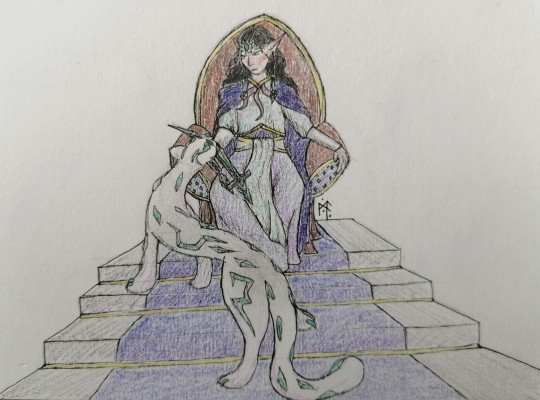
High King Fingolfin, and the spirit inhabitating his sword, Ringil.
#silmarillion#the silmarillion#pokemon#pokemon mithril#fingolfin#nolofinwë#chien pao#ringil#ruinous pokemon
30 notes
·
View notes
Text
#anglachel#gurthang#eol#thingol#beleg#turin turambar#angrist#curufin#beren#anguirel#maeglin#aranruth#glamdring#turgon#ringil#fingolfin#belthronding#dailir#aeglos#gil galad#aiglos#dramborleg#tuor#grond#morgoth#polls#silmarillion#tolkien#jrr tolkien#the silmarillion
46 notes
·
View notes
Photo
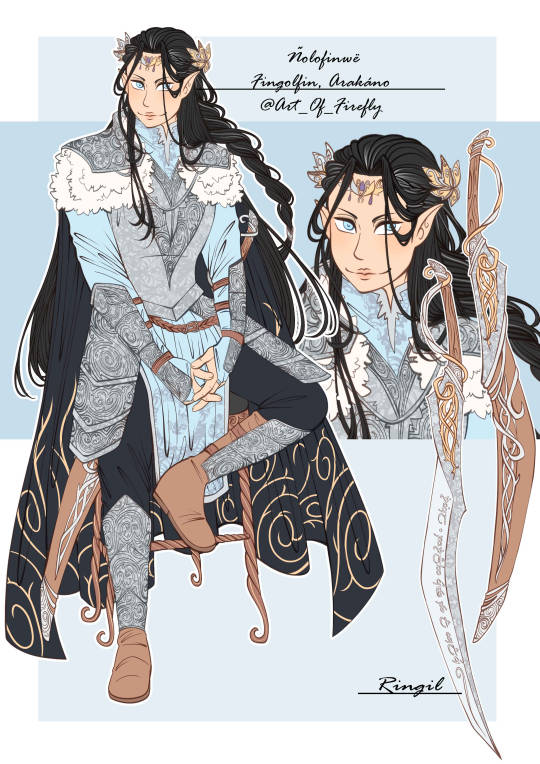
Fingolfin
I gave him some white hair to show the weight of the crown he wanted so much, and because it’s pretty.
I designed Ringil too, i decided to draw the weapons when they are important and named. I think this is the coolest sword i ever created.
House of Finwë
#fingolfin#house of finwe#my art#nolofinwe#arakano#silmarillion fanart#the silmarillion#ringil#silmarillion#tolkien
266 notes
·
View notes
Text
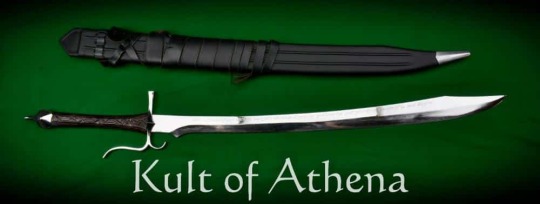
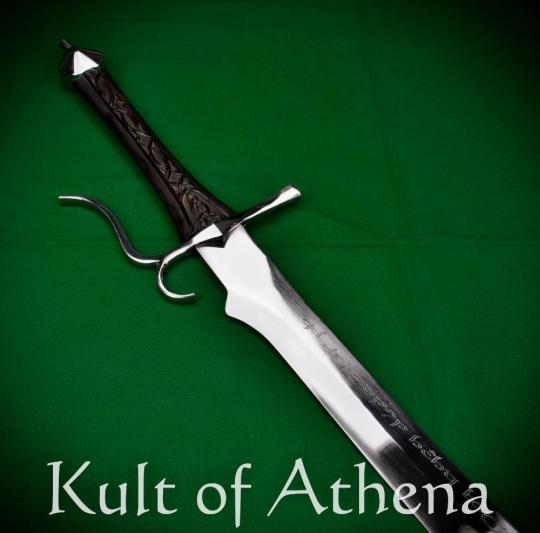
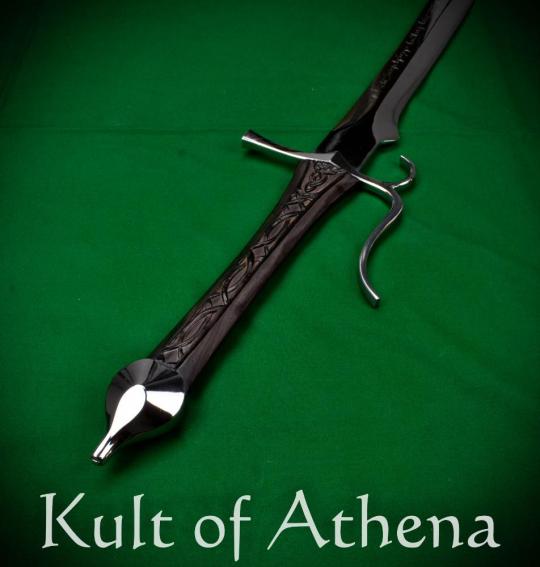

Darksword – Elven High King Ringil Sword
The Darksword Elven High King Ringil Sword has a blade forged from 5160 high carbon steel that has been dual-tempered. This differential tempering is not unlike what is done to heat-treat a traditionally-crafted katana; it creates a sword with a softer core and harder edge. This allows the sword to best retain a keen edge whilst being able to flex with the shock of the strike or the parry. The crossguard and pommel of the sword are of steel and the grip is of intricate wood with knotwork design. The companion scabbard for the sword is of wood and is overlaid with black leather. A steel chape protects the tip of the scabbard and it is completed with an integrated leather sword belt.
Inspired by J.R.R. Tolkien’s The Silmarillion, the Darksword Armory Ringil is a European-style sabre with a fantasy twist. In the ancient history of Middle Earth, Ringil was carried by the elven High King Fingolfin, the most valiant warrior who ever lived. One of the few named weapons in Tolkien’s works, Ringil was used by Fingolfin in his epic single combat against the Dark Lord Morgoth. This deadly Elven blade gave the Dark Lord wounds from which he never recovered. Our version of Ringil is single-edged, as were many of the Elven weapons of the Second Age depicted in the Peter Jackson Fellowship of the Ring prologue. A hand-and-a-half sabre, this sword is similar to 16th century Swiss designs – with a fantasy twist. With excellent handing, a carved hardwood handle, and Elven script on the blade this sword sits comfortable at the intersection of deadly and beauty.
#Kult of Athena#KultOfAthena#New Item Wednesday#Darksword Armory#sword#swords#weapon#weapons#blade#blades#Fantasy Swords#Fantasy Weapons#Longswords#Lord of the Rings#LotR#The Silmarillion#The Fellowship of the Ring#The Hobbit#Ringil#Fingolfin#Middle Earth#Morgoth#5160 High Carbon Steel#Battle Ready#new item#new items
10 notes
·
View notes
Text
I just felt the need to point out that Ringil, Fingolfin's sword, glows blue as well.
"...Fingolfin like a shooting light
beneath a cloud, a stab of white,
sprang then aside, and Ringil drew
like ice that gleameth cold and blue,
his sword devised of elvish skill
to pierce the flesh with deadly chill..."
- Lay of Leithian
#i think someone had once pointed out that perhaps Sting glows blue because it is from Gondolin#and because the House of Fingolfin generally uses blue#but i hadn't read any proof in the books about it until now#Ringil glowing blue is proof#Lay of Leithian#Fingolfin#Ringil#Sting
4 notes
·
View notes
Text
First attempt at drawing a sword from the Silmarillion. Ringil.
Click to see clearer picture.
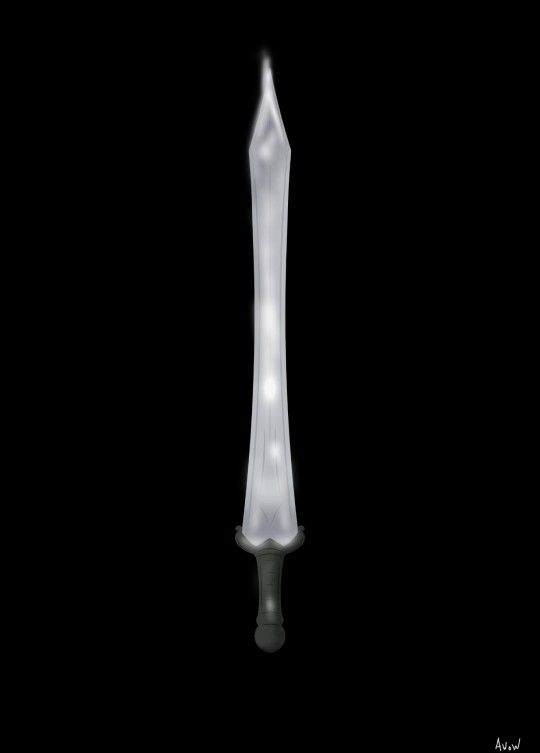
2 notes
·
View notes
Text
instagram
Ormal's Pillar remnants, Ringil
#daniel pemberton#mystic rectangle#songvoice#singer#psionics#jimrick#xna#annals of aman#ringil#ormal#foresight#Eäla#almaren#tauron#Instagram#SoundCloud
0 notes
Text
Elden Ring and Tolkein's Legendarium
In a way, Elden Ring as a game can be viewed a deconstruction of all things common in "fantasy".
It has been said that the Lord of the Rings is the origin of the high fantasy genre. The first step of a deconstruction (or of duplicating results) is to look at a thing and examine the elements it is made of. The more general the better - the goal is to find the things that inspired the thing:
The setting is inspired by research into many real world mythologies and folk tales. And Tolkein's religious beliefs as a Catholic.
Tolkein invented full language systems that were used to add extra significance to the names of people and places
The personal history and psychology of the author had an undeniable influence on the themes of the story (when Tolkein writes about the devastation of war it is from a place of sincerity - because he lived it)
So, these are the ingredients of a successful fantasy story that also apply to Elden Ring - draws parallels to previous fantasy stories, use of exotic words and naming schemes that are internally consistent as parallel to the real world, and incorporates psychologically-driven themes (in the case of Elden Ring I believe that it is less of the psychology of a person and more about drawing on the psychology of the gaming company FromSoftware...but that is a topic covered in other posts).
But regarding the works of Tolkein there are a few more...explicit parallels to be drawn. Which for legal reasons regarding the rights to adapt Tolkein's Legendarium will likely never ever be confirmed by FromSoft. But as I see it getting references under the radar of the copyright lawyers is a time honoured tradition of fantasy stories so I will attempt to explain these connections as I see them, regardless.
A linguistic connection is formed in the space between two main points that I am aware of: Gelmir of Nargothrond as the possible naming inspiration for Mt. Gelmir, and geographical region "Taur-en-faroth" containing part of the name used for Fort Faroth.
Gelmir
"J.R.R. Tolkien has become a sort of mountain, appearing in all subsequent fantasy in the way that Mt. Fuji appears so often in Japanese prints. Sometimes it’s big and up close. Sometimes it’s a shape on the horizon. Sometimes it’s not there at all, which means that the artist either has made a deliberate decision against the mountain, which is interesting in itself, or is in fact standing on Mt. Fuji." - Terry Pratchett
First addressing Gelmir - literally the volcanic mountain is a reference to Tolkein. As clear of a declaration as possible that Elden Ring intends to stand on Mt. Fiji.
Gelmir in the "canon" version of the Legendarium was an elf of Nargothrond who was captured by the forces of Morgoth at the "Battle of Sudden Flame" which was the fourth great conflict in the War of the Jewels (the war over the 3 silmarils for which "the Silmarillion" is named). He was subsequently blinded and tortured for 17 years until his death - after having his limbs cut off to taunt his brother Gwindor into attacking recklessly - at the start of the fifth great conflict known as "The Battle of Unnumbered Tears". Gwindor himself was captured and held prisoner for an additional 17 years after this battle, before escaping at the expense of having a hand cut off and eventually dying in another battle of the war. He was in love with a golden-haired elf maiden named Finduilas (name meaning "hair of spring leaf") who he also called "Faelivrin" meaning "Gleam of the Sun on the Pools of Ivrin" ("Pools of Ivrin" being a location in the land called Beleriand). She was killed before the end of the war by being nailed to a tree with a spear.
For context, the sixth great conflict was called "The War of Wrath" and was the final one. Morgoth brought dragons to the battle to blast the battlefield with fire and lightning - which had never been done in any previous battle - and the outcomes were that Morgoth was beheaded and kicked through a portal into the void and the northwest corner of the map including almost all of Beleriand (an area equal to the size of the entire Middle Earth map at the time of the Lord of the Rings story!) sunk into the ocean.
There is a lot to work with here already - first being Gelmir's associations with flame and imprisonment and torture that are shared by both Tolkein's and Elden Ring's purposes. Blindness is noteworthy, considering how often this is a theme with Elden Ring characters and even partial blindness is enough to cause madness as indicated by the Prisoner Helmet. Taking a few lateral steps arrives at a golden haired maiden who shares the method of execution used for Marika. And her name meaning "gleam of the sun on the surface of the water" exactly describes the imagery seen in the Elden Ring item "Memory of Grace".
But there's still more to spin from this line! Because Finduilas had another lover named "Túrin Turambar" who was a friend of Gwindor and whose family line had been cursed by Morgoth. Túrin owned a magic helm upon which was perched an image of the Golden Dragon Glaurung - similar to the style of helmet worn by Elden Ring's Banished Knights - and which allowed him to survive dragon fire. Túrin found on the grave of Finduilas a naked woman who he called "Níniel" or "Maiden of Tears" - because she had lost her memory and was crying - and wed her with neither knowing that they were estranged brother and sister (this is based on the Finnish story of Kullervo, with which Tolkein was especially fascinated). This was revealed to them later to be a machination of Glaurung when Túrin was in the midst of slaying the dragon, and subsequently both Túrin and Níniel self-destructed. Before meeting his end, Túrin also described himself in (probably) poetic terms as having blindness being the curse placed upon him by Morgoth, which is assumed by readers to be more a matter of tunnel vision or short sightedness rather than literal blinding. He is also apparently prophesied to return to life someday in the supplementary materials.
What this means exactly for Elden Ring is up to interpretation. A story could be spun by combining Gelmir, Gwindor, and maybe even Túrin into a single character who are motivated by unrequited and/or incestuous love - to fill in the empty spaces around the characters of Marika, Radagon, and Godfrey. But there is even more nuance here because there are the alternate Gelmir's to consider.
In one version, Gelmir was king of the gnomes, by which Tolkein was inspired by the Greek "gnōmē" meaning "thought" or "intelligence". But this was dropped due to the cultural confusion with gnomes being wrinkly little creatures.
In another version Gelmir was the same character as Finwë, an elf who was born during the "Years of the Trees" that preceded the era called the "Years of the Sun". At this time, the light of the world was confined to the Lands of the Valinor (a pantheon of Creator types) in the west provided by the female golden tree named Laurelin in the south and the male silver tree Telperion in the north. Finwë's wife was a weaver named Míriel Therindë and his son Fëanor was responsible for forging the Silmarils and jealously guarding them (And also he invented the 7 palantíri scrying stones + 1 master stone, and the Tengwar writing system). The grandson of Fëanor and last of his line was Celebrimbor, meaning "silver fist". Celebrimbor forged the three rings for the elves (named for air, fire, and water) that were subject to the One Ring but never corrupted by it. So, yeah, it's possible that "Gelmir" is selected for being a seemingly niche character who was actually in another lifetime very closely connected to these core events of the history.
The 3 Silmarils contained the remaining light of the two trees that were destroyed and had the sun and moon forged of their fruits by blacksmith Aulë. When the trees were first made they were sung into existence by Yavanna and watered by the tears of Nienna (who was a teacher of the wizard Gandalf and in earlier versions of the Legendarium called "Queen of Shadow"). Nienna again wept healing tears upon the trees to grow the fruits when they were dying. Morgoth stole the Silmarils and set them into his Iron Crown, and upon his defeat the stones were pried out and the crown beaten into a collar for his neck (in the brief period of time before he was kicked into the void anyways). One Silmaril was thrown into the sky where it became the Evening Star. Another was cast into the sea. And the third was cast into a firey pit in the earth along with its possessor.
And as an addition, it is not farfetched that Morgott = Morgoth is an intended spiritual parallel. Considering that Morgoth was indirectly responsible for the blinding and killing of Gelmir (brother of Gwindor) in Tolkein's mythic history. And in Elden Ring this seems expressed in the Shattering War though Morgott pursuing Mt. Gelmir most fiercely. Also, Morgoth was the identity taken by Melkor after he was released from the chains made to bind him by Aulë, which is paralleled by Morgott being the name used by the previously bound Margit (it is called 'Margit's Shackle').
Faroth
"Faroth" is a Sindarin word meaning "hunters". The "Hills of the Hunters" (Taur-en-faroth) was a location in West Beleriand, the aforementioned western part of the continent that sunk into the ocean at the end of the War of the Jewels. In these hills was hidden the secret elven city of Nargothrond. The same from which Gelmir of Nargothrond is associated. The city began as a Dwarven Hall for the petty dwarfs (exiled and unsociable dwarfs smaller than typical dwarfs), was conquered and ruled by the House of Finarfin (a son of Finwë), and was sacked and turned to the lair of the dragon Glaurung some time after The Battle of Unnumbered Tears. And then fell into the ocean.
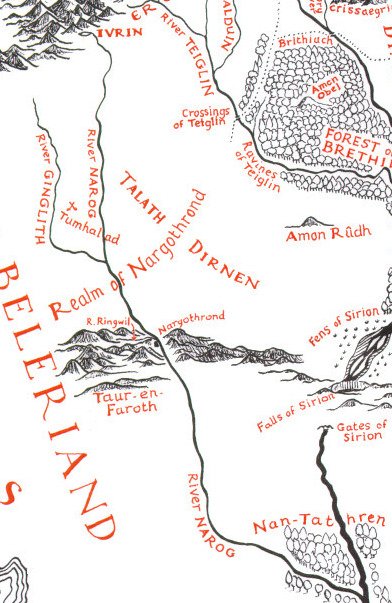
At this point there are too many names, so I sketched a family tree of all of these elves:
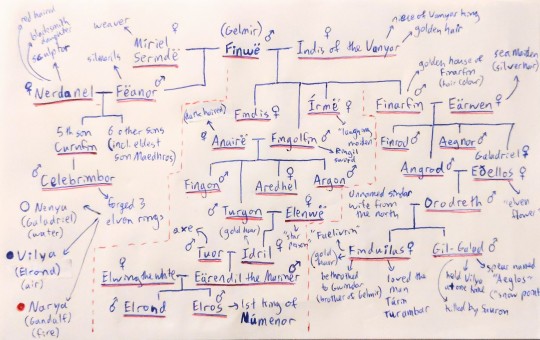
Some general trends:
Of the 3 family lines the middle one has significance for being the one to produce the Númenor Kings of Men
The family lines at the two sides have plot significance as discussed in the Gelmir section, but then just kindof die off.
Typically only the male lines matter for continuity, except for Idril in the 3rd generation removed from Finwë. The origins of the women spouses and daughters mostly are otherwise not mentioned or appear and disappear as needed from the aether (with 3 exceptions: Indis has a famous uncle, Nerdanel has a significant blacksmith father, and Eärwen's extended family has some substance to it)
If a writer wanted to do a legally distinct take on this mythology while borrowing from it for whatever reason, it would be easy to condense the feats and characterization of these 3 lineages into one truncated one. Maybe fuse Finduilas with Idril - two blonde ladies with minimal character - and also fuse together their lovers and you have a Marika + Godfrey. The narratively satisfying thing about Finduilas being associated to Gwindor (who is practically the same character as Gelmir) is that it creates a closed loop for the whole lineage when Gwindor/Gelmir is substituted for Finwë, which is a very attractive proposition for a story where time is a wheel and regression to the origin point is a principle of the Golden Order.
Also this region calls attention to the significance of the river Ringil. That word comes up as: 1) a mountain river through Taur-en-Faroth that is tributary to the Narog river, 2) a sword held by Fingolfin (another son of Finwë), and 3) as the primordial tower - possibly made of ice - upon which sat the south lamp Ormal (an orb containing the gold light of the world in the First Age that would later pass to the gold tree Laurelin in the Second Age). In an earlier version of the writings. The blacksmith Aulë created the lamps at the request of Yavanna, who was herself responsible for the growth of fruits and trees. The end of the "Days before Days" (which preceeded the "Years of the Trees") occurred with the breaking of the lamps by Melkor, after a period of time where he had poisoned the land and caused the things made by Yavanna to rot.
There is a confusing timeline here in the early history with spans of time lit only by the stars between the destructions of these various sun/moon light sources, with Yavanna singing all living life to sleep due to the lack of light except maybe the elves are still awake and doing things? The lamp and tree stuff and a bunch of elf stuff happens before the First Age of history, but the start of the First Age is also called "The Awakening" so again I don't grasp the sleep thing. Aulë was also responsible for creating the "Seven Fathers of the Dwarves", but he made them too early and they had to go to sleep so that the elves of Ilúvatar could pretend to be the first sentient mortal life? I have lost interest in interpreting the mythic timeline, so I'll just end this with more context for the lamps:
"In the middle of Arda, where the light of the lamps mingled, amid the Great Lake lay the Isle of Almaren, where the Valar dwelt." - The One Wiki to Rule them All
"In J.R.R. Tolkien's older writings (not used in the published version of The Silmarillion), the Valar sought peace with Melkor, asking his assistance with fixing the lamps upon Arda. Melkor, still envious and hateful of the rest of the Valar, agreed to give them a strong, sturdy substance. He gave Aulë ice. Melkor permitted the Valar to do as they wished until the fateful day when the Lamps' light and heat finally melted the ice. The pillars crashed upon Arda, flooding it with water and darkness." - The One Wiki to Rule them All
I suppose that if I have a point here it is that Radagon's Sore Seal talisman is found at Fort Faroth, which through the winding etymology of words is tied to Mt. Gelmir. Perhaps the blind Radagon was a hunter on a fruitless quest seeking the lost light of the Golden Sun from the days before days - guided by the distant memory of the reflection of it's light on the water. Perhaps there is other meaning to be found. After a certain point any interpretation found through these linguistics should be cross-referenced with everything that can be learned from all other sources of information in the game.
The Rings of Power
The big brazen choice - in my opinion - was to name the big metaphysical artefact "the Elden Ring"...and then draw direct parallel to the Rings of Power. Not the 3 rings granted to the Elf Kings under the sky - I've yet to identify how or if those are expressed in game. Not the 9 rings granted to Kings of Men either - those are seemingly represented in the 9 Night's Cavalry (and possibly the 9 weapon talismans that each feature a ring at the top of the head) . What is most relevant here are the 7 Great Runes matching "seven for the Dwarf-lords in their halls of stone".
The first critical part of that phrase is the reference to "stone", as I have brought up previously that the shattering of Marika's Hammer equates to the shattering of the wisdom of stone. But the second point of note is that the dwarf lords of Tolkein received their own curse from holding their rings of power - obsession with gold. A similar obsession is seen in Elden Ring where all of the demigods are corrupted by their great runes and covet the grace of gold.
The arrangement of the Elden Ring also has some synergy with the arrangement of its runes - 6 of the 7 dwarf lords pair nicely through the even numbers. The Seventh Dwarf Lord was the chief among them "Durin the Deathless", who was reincarnated 7 times by being reborn as one of his own descendants. His clan also was generally known to absorb members from all other clans due to his central importance. The first Durin (one of the 7 original fathers of dwarves) built the underground city of Khazad-dûm that would later be called Moria after a creature of shadow and flame that may-or-may-not have wings (a Balrog of Morgoth) was uncovered in its depths by Durin VI. Durin III was the one to receive the Ring of Power from Celebrimbor, and Durin IV was contemporary to the first rise and defeat of Sauron. Durin VII is apparently contemporary to the timeframe of the Lord of the Rings and second defeat of Sauron, though he did not participate and seems to be known instead for reclaiming Khazad-dûm from the orcs.
So what's the point of the elaborate Tolkein parallel? There may be 7 ring-shaped great runes, but there is also clearly one ring that rules them all - the Elden Ring. So examining Tolkein is one of several avenues of analysis reaching the conclusion that the ring is a dangerous object that corrupts everyone who touches it and must be destroyed. Of the six endings the only one that understands this is Ranni's Age of Stars. And in the Lord of Frenzy Flame ending the Tarnished succumbs to the power of the ring with head becoming a ring of flame matching the firey beacon on top of the Frenzy Flaming Tower - itself visually recalling a depiction of the Eye of Sauron atop the tower of Barad-dûr.
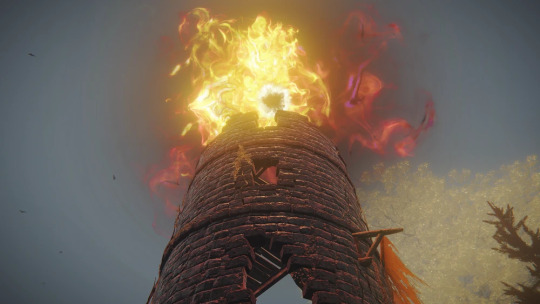
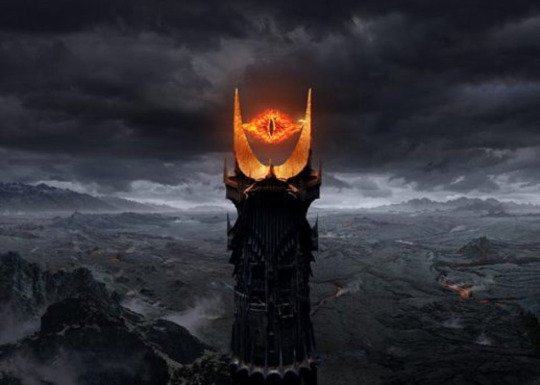
And even more, there's one ring bearer in particular who provides another piece to the puzzle of Radagon and Marika's dual identities. The dissociative identity of Gollum and Smeagol can completely describe the relationship between Marika and Radagon. Two thoughts in one body. With this lens I think that Radagon/Marika were likely not separate entities at the time of their Shattering and may have never had a separate existence. They can appear to hold conversations with each other through reflective surfaces, such as a very shatter-able mirror.
It is quite possible that another Great Rune (or more) will make an appearance in the DLC. If this does happen, I'll re-evaluate Ring of Power theory based on the nature of the added rune.
A Micro Parallel to the Macro Scale
One last note which, again, is oblique enough for plausible deniability. The end of Patches questline would have the Tarnished deliver the Dancer's Castanets to Tanith, inside the volcano. If you know anything about castanets, they are typically made of hard materials such as wood or ivory (or plastic) and carved into a pear shape. Not so for the Dancer's Castanets. From a visual examination these are made of metal cast in a circular shape and with a ring shaped engraving filled with filigree. A metal ring-shaped object delivered to a volcano, echoing the One Ring delivered to Mt. Doom in the Lord of the Rings.
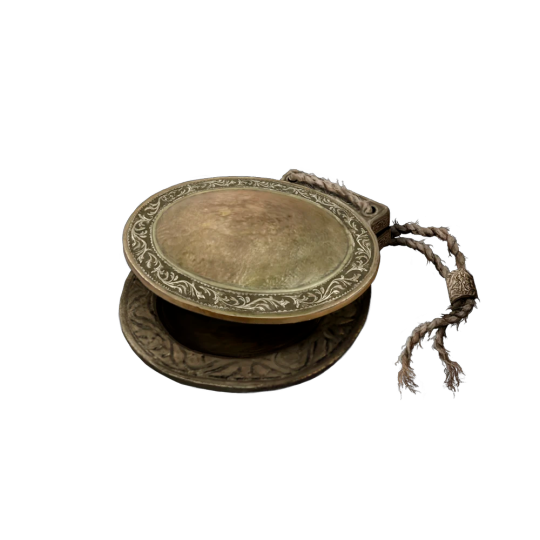
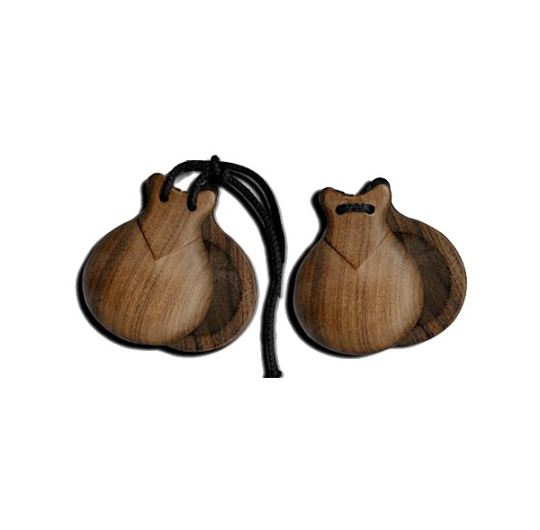
#elden ring#tolkein#elden ring lore#media analysis#Anagram lore: Radagon = a Narog D#D Beholder of Death perhaps#Another anagram: Radagon = Argon Da#Like the sword version of Ringil was wielded by Fingolfin the father of a semi-canon character named 'Argon'#It has a blade that glitters like ice perhaps similar to the 'Frozen Needle' found in the Kingsrealm Ruins#I like when things come in numbered lists such as Durin I to Durin VI matching to the first 6 eras in my ER astrology timeline
4 notes
·
View notes
Text
Reading "A land fit for heros" series right now and I can't understand how few tumblr posts there are about it. Like, I need more people to talk about Ringil.
3 notes
·
View notes
Text
The fandom for A Land Fit for Heroes is so small and this is so niche nobody will relate to it, but :
Ringil Eskiath and James Flint meeting. Two slavery abolitionnist, erudite, anti-authority, former military, unapologetically gay/bi warriors determined to see the ruling class/political system burn to the ground, motivated by the loss of a lover earlier in their life, because of said system. Both good on ships and believed by their men to be able to conjure up storms. Both incredibly persuasive and talented when it comes to convincing their crews to follow them to almost certain death. Both with a black lesbian friend/ally working within civilization to try to tweak it in her favor rather than overthrow it and who ends up on top of it. Both single-minded and going into murderous rages when deprived of someone they love.
Ringil being an actual sorcerer who could conjure up a storm or water spirits or a kraken for Flint. Flint working with Archeth to manipulate the emperor of Yhelteth. Flint sacking Trelayne like he sacked Charlestown, taking down the torture cages for the execution of homosexuals. Ringil leading Flint's men in attacks inland.
The possibilities.
(That is, if they could work together without killing each other after five minutes. Ringil would think Flint is self-righteous and too much of an idealist and Flint might be disgusted by Ringil's selfishness and because he only does things out of spite, not ideology.)
And of course Silver seeing it all happen and hating all of it because Ringil is poison, he's an enabler, and he would just wind Flint up until they're all destroyed. Also, the pure jealousy he would feel seeing this man who looks like him (black hair, blue eyes) but with two fucking legs (internalized ableism) and no sexual repression inserting himself between him and Flint. My boy Silver would flip the fuck out. Silver trying to get Ringil removed or killed. Madi starting to see the value of Ringil as an ally in taking down the slave trade and Silver panicking about it. And if he wants to stop the war now, he has to get rid of the Urca gold and Ringil.
Damn, if only I could write.
#did I just write fanfiction?#and I can't draw either so I'll just have to imagine the fanarts#Two obsessions collided that shouldn't have#A Land Fit for Heroes#Black Sails#Ringil Eskiath#James Flint#read A Land Fit for Heroes but steal it the author is a TERF#it's not nearly as good and coherent as Black Sails but honestly what is#it's still so intense it fucked me up for months#anyway happy pride month
5 notes
·
View notes
Text
(283) August Independent Music Special Pt. 1
Disciples!!Wow – August sure went fast, didn’t it? Well, the good news is that we have a new Independent Music Special quicker – at least it feels that way. We have all sorts of goodies released in August, and this is the first of two. This episode brings the ‘Rock-to-Heavier’ bunch out, and Part II will have the EVEN HEAVIER releases in it. So, MASH that play/download button, and give your ears…
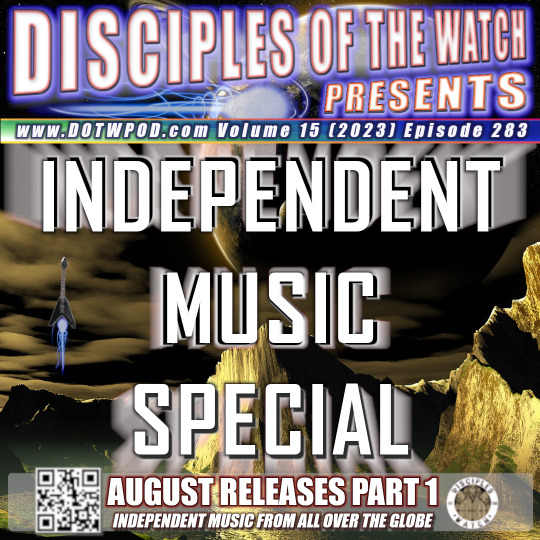
View On WordPress
#Aawks#Accidental President#AIWASS#Armagelion#Bees Made Honey In The Vein Tree#Big Red Fire Truck#Bone Dagger#Carl Adams#Dali VanGogh#Danicide#Dun Ringill#Fierce Atmospheres#From Hell#Holy Death Trio#Howling Giant#J.P. Krom#Jaguero#Josh Keech#Lark#Melonball#MonteCarlo#Nepthisis#Opensight#Paul Maged#Periscans#Restless Spirit#Sacred Dawn#Shepherds Reign#Spoilers#Stitched Up Heart
0 notes
Text
DUN RINGILL Announce Tour with PENTAGRAM, Share Final Single + Lyric Video from New Album
DUN RINGILL announce that they will be going on tour together with Pentagram in August across Europe, celebrating the release of their upcoming album “Where the Old Gods Play Act 1”. Set for release on The Sign Records on the 4th of August, the concept album follows the story of main character Lucia’s spiritual and religious journey, brought to life by Dun Ringill’s uniques blend of nordic folk…
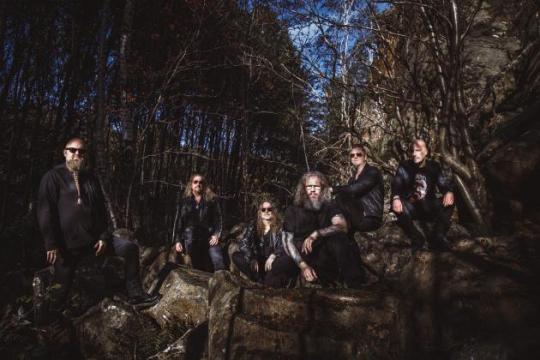
View On WordPress
0 notes
Text
youtube
Jethro Tull - Dun Ringill
From the album Stormwatch
0 notes